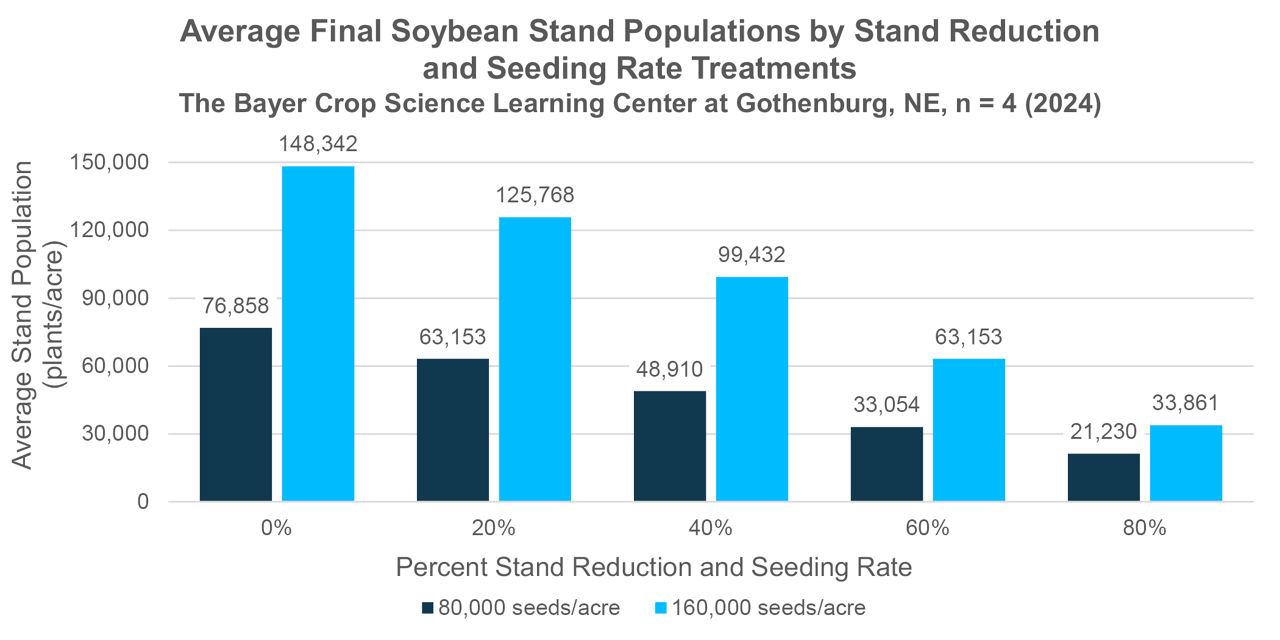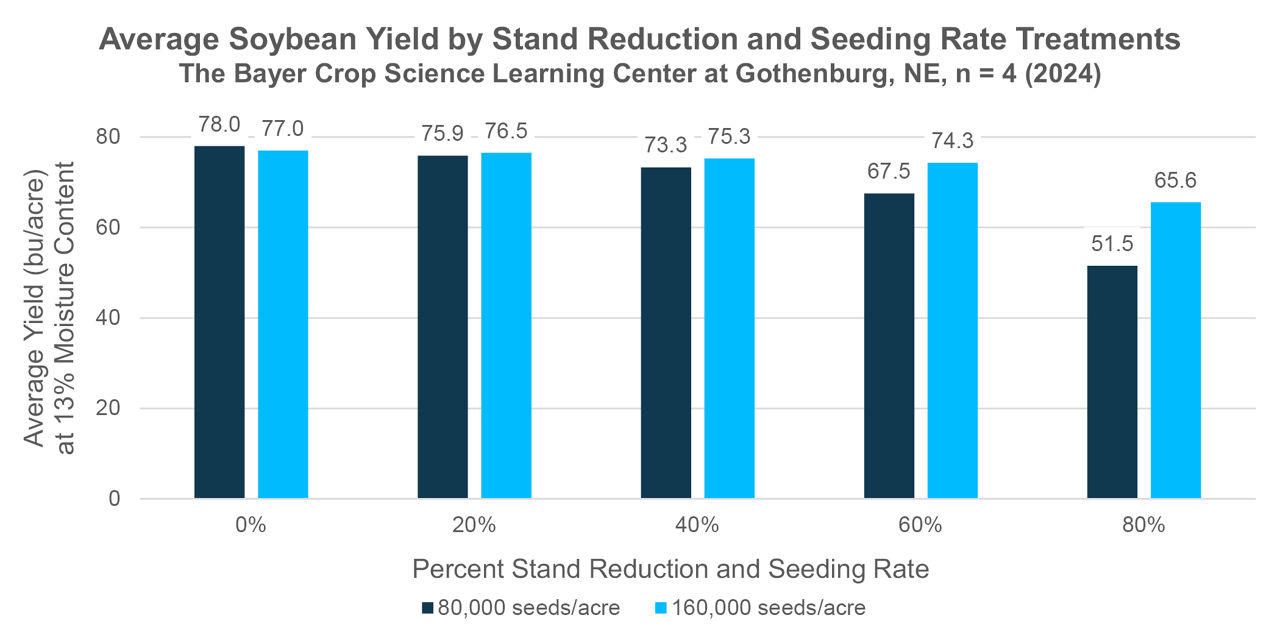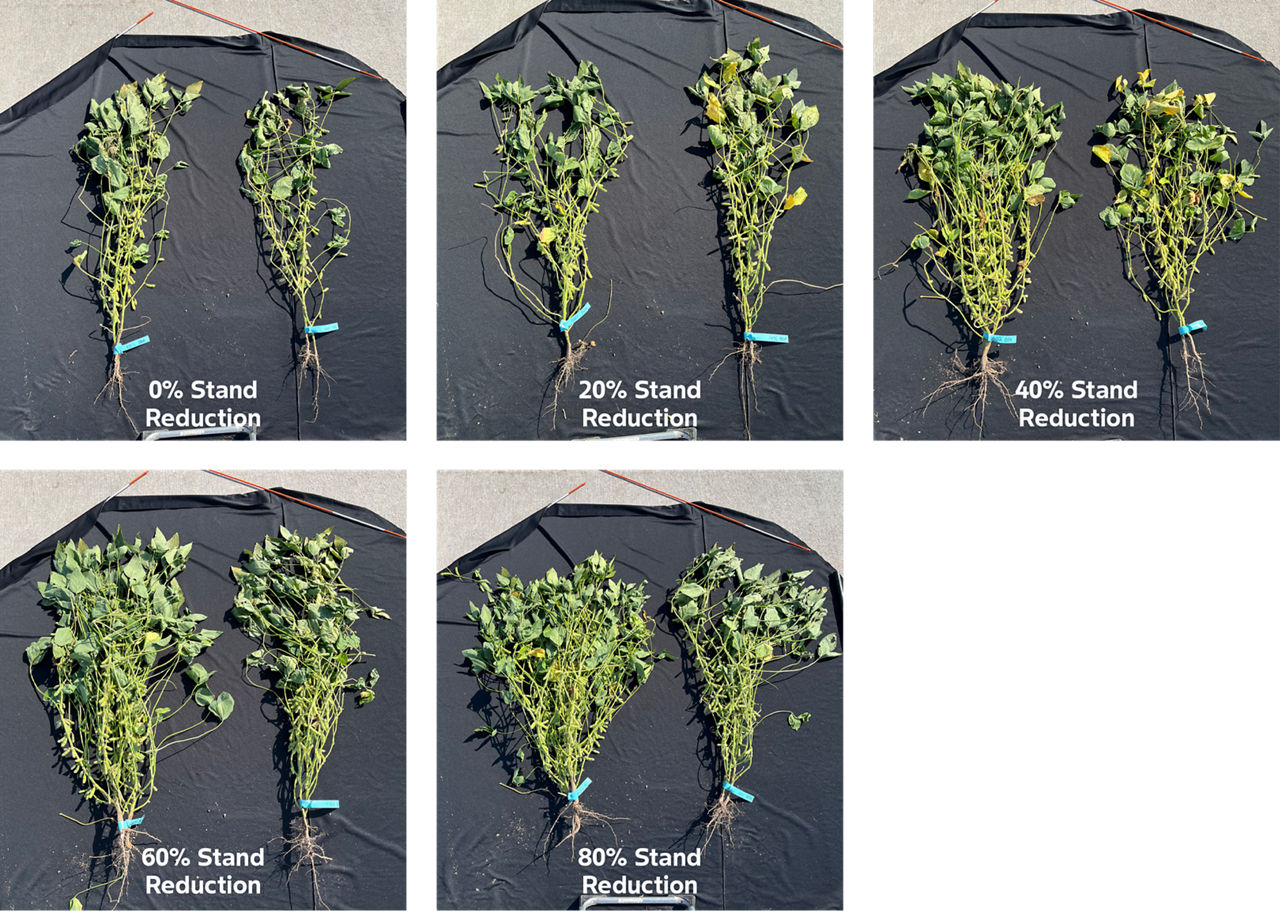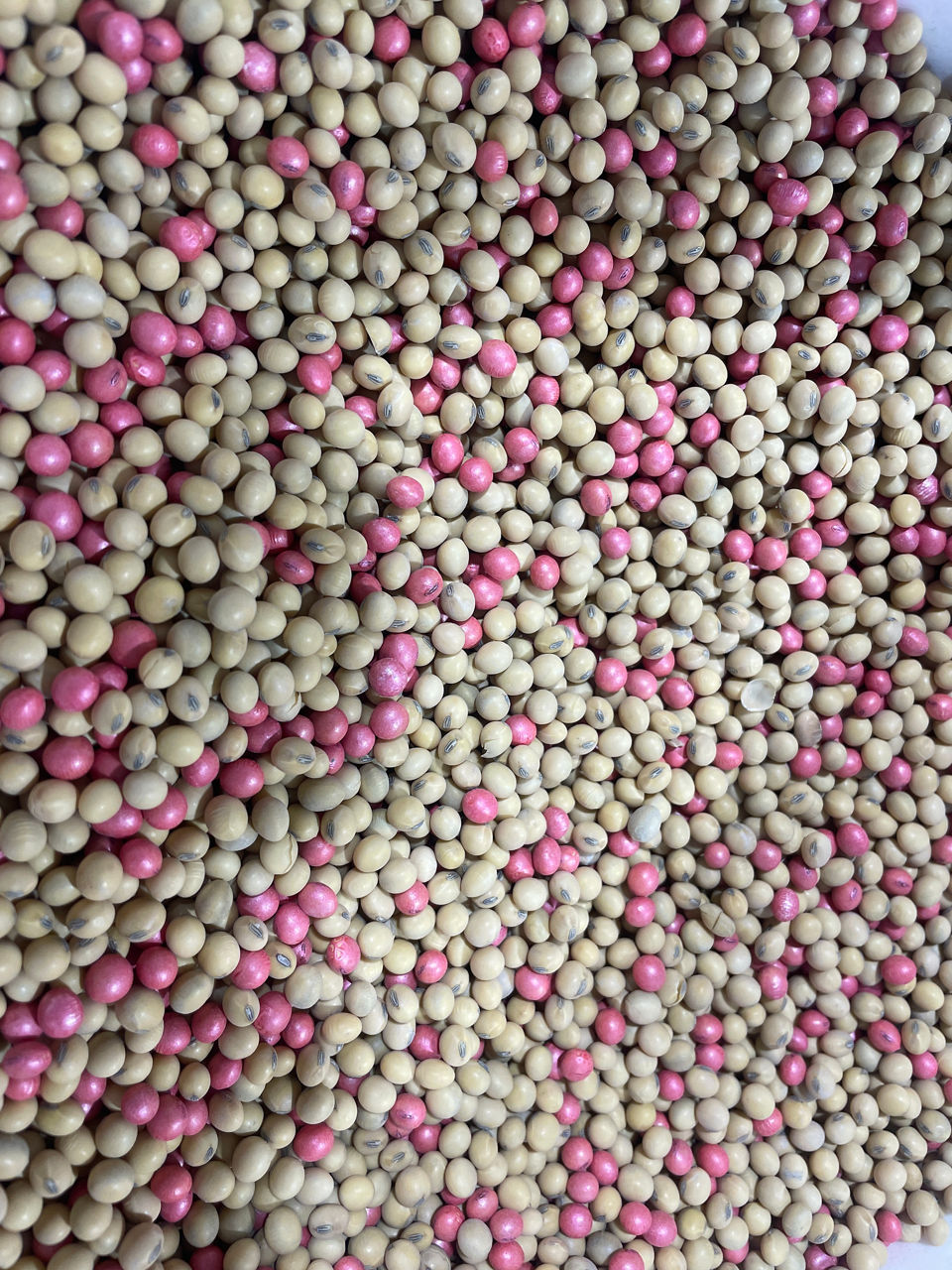Impact of Seeding Rate and Stand Reduction on Irrigated Xtendflex® Soybean
March 26, 2025
TRIAL OBJECTIVE
- Seeding rate and the overall stand health can significantly affect the yield potential of soybean.
- Several biotic and abiotic factors can result in soybean stand reduction, including herbicide drift, plant pathogens, drought, soil compaction and crusting, and weed pressure. Altering the initial planting population and potentially replanting after stand reduction to hit target yields are crucial decisions for growers to make.
- This study’s objective was to determine the effect of two seeding rates and five levels of stand reduction on soybean yield potential.
RESEARCH SITE DETAILS

- The trial was arranged as a randomized complete block design with four replications and two treatment factors – seeding rate and percent stand reduction.
- Seeding rates: 80,000 and 160,000 seeds/acre
- Stand Reduction (%): 0%, 20%, 40%, 60%, and 80% were achieved by mixing a non-herbicide tolerant soybean product in with the test product so that the desired percentage of stand was removed when sprayed with herbicide.
- The soybean product used was a 2.7 MG XtendFlex® soybean product.
- The trial was strip-tilled on 04/18/2024 with a base fertilizer application of 22 lb of nitrogen per acre (lb N/acre), 70 lb of phosphorus (lb P/acre), and 25 lb of sulfur (lb S/acre).
- Weed management:
- Pre-emergence on 5/10/2024:
- Fierce® MTZ herbicide at 16 fl oz/acre and Roundup PowerMAX® 3 herbicide at 30 fl oz/acre
- Post emergence on 6/13/2024:
- Ammonium sulfate (AMS) at 3 lb/acre, Liberty® herbicide at 42 fl oz/acre, Roundup PowerMAX® 3 herbicide at 30 fl oz/acre, and Warrant® herbicide at 48 fl oz/acre.
- Post emergence on 6/24/2024:
- Roundup PowerMAX® 3 herbicide at 30 fl oz/acre, Liberty® herbicide at 42 fl oz/acre, and Warrant® herbicide at 48 fl oz/acre.
- Pre-emergence on 5/10/2024:
- Soybean harvest stand counts were taken prior to harvest.
- Total weight, test weight, and moisture content were collected with a plot combine to calculate yield per acre.
UNDERSTANDING THE RESULTS

- As the percent stand reduction increased, the stand populations at harvest decreased in both seeding rate treatments (Figure 1).

- In the 80,000 seeds/acre treatment, plots with 60% stand reduction had an average yield of 10 bu/acre less than plots with 0% stand reduction (Figure 2).
- The 80% stand reduction treatment had the lowest yield in both the 80,000 seeds/acre and 160,000 seeds/acre treatments (Figure 2).
- In both seeding rate treatments, stand reductions of up to 40% had average yields from 73 to 78 bushels/acre (Figure 2).
- At 80% stand reduction, the average yield of the 160,000 seeds/acre treatment was 14 bushels/acre higher than the 80,000 seeds/acre treatment (Figure 2).


KEY LEARNINGS
- Soybean stand reductions due to growing conditions or management practices may not impact yield potential without large reductions in plant stands.
- This trial indicates that replant may not be necessary as long as the stand losses are fairly uniform across the field until stand losses are above 40% with a planted population of 80,000, and above 60% with a planted population of 160,000 seeds per acre. However, less uniform reductions may produce different results. Stand reductions from diseases or herbicide carryover are usually not uniform.
- While reduction in soybean stands allowing weed germination due to the lack of a canopy has been observed in other trials, the herbicide program used in this trial helped to prevent weed emergence.
- Growers should work with their local seeds sales team member to help identify the best adapted XtendFlex® soybean product for their production systems.
No dicamba may be used in-crop with seed with Roundup Ready® Xtend Technology, unless and until approved or specifically permitted, and no dicamba formulations are currently registered for such use in the 2025 season. Please follow www.roundupreadyxtend.com/pages/xtendimax-updates.aspx for status updates. Dicamba may harm crops that are not tolerant to dicamba.
1314_507700